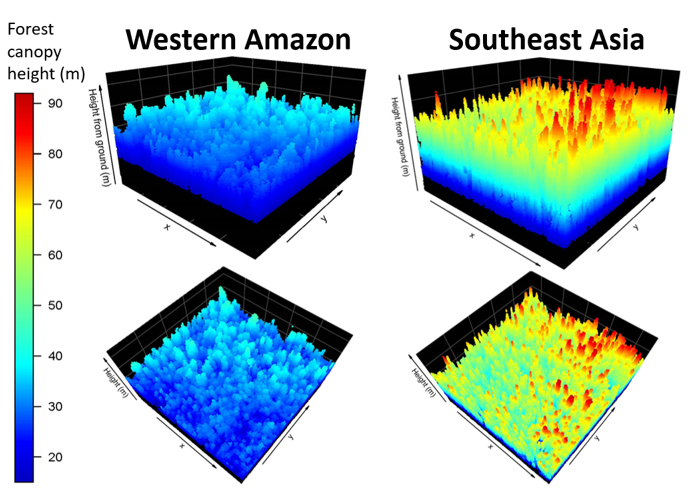
LiDAR derived canopy height data from the Global Airborne Observatory.
Forests across the globe vary in species composition, structure, and function. This variation is linked to different evolutionary trajectories, nutrient availability, climate regimes, disturbance histories, and human impact. With the goal of exploring the factors that govern heterogeneity in forest ecosystem function across scales, we use plant-, plot-, and landscape-scale measurements, with a particular focus on linking field observations and remote sensing measurements. Some of the datasets we draw on include the ForestGEO and ForestPlots.net plot networks, the Global Airborne Observatory, the NEON Airborne Observation Platform, and GEDI.
The role of forest ecosystems in global environmental change
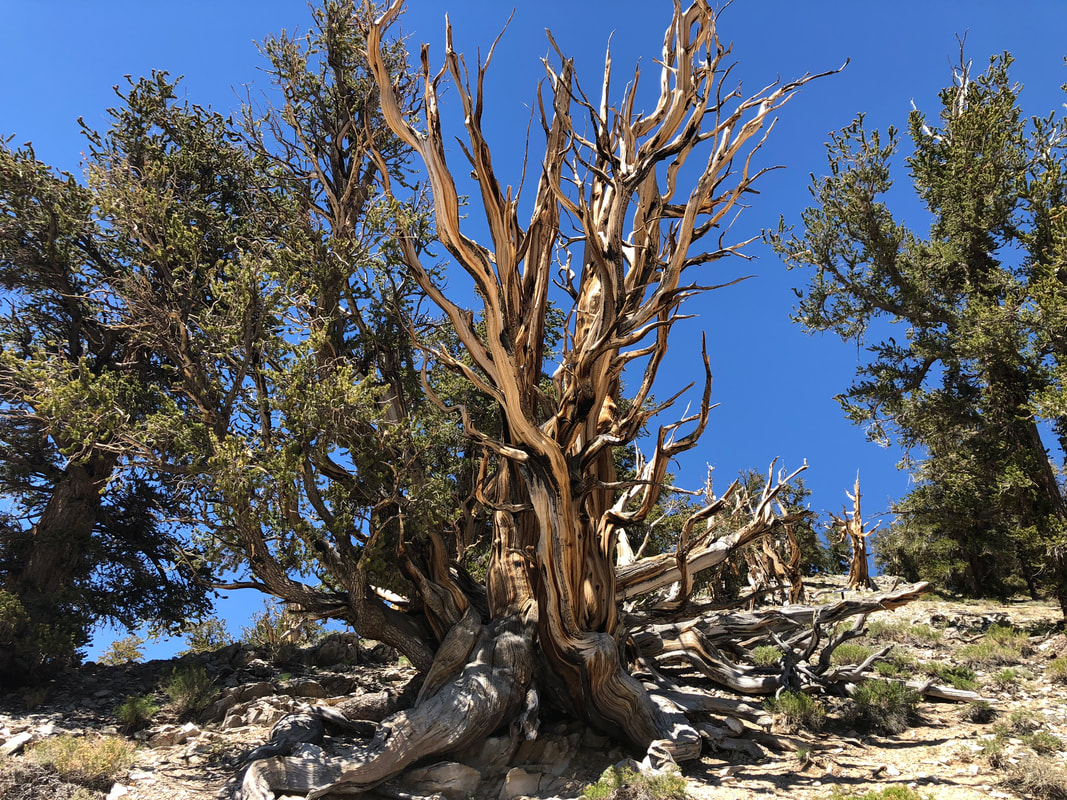
Bristlecone pine in eastern California.
We are currently living in an epoch marked by numerous human-induced changes. Forests are intricately connected to these global changes due to their role in land-atmosphere feedbacks and the global carbon cycle. Furthermore, different forest ecosystems will likely vary in their response to change. Focusing on forest ecosystems in the tropics and in California, we use 1) empirical data to examine how past disturbance histories have shaped today’s ecosystems, and 2) models like the Ecosystem Demography Model to explore how scenarios of future change will influence key aspects of ecosystem function, for example carbon flux dynamics.
Patterns, pathways, and consequences of tropical deforestation
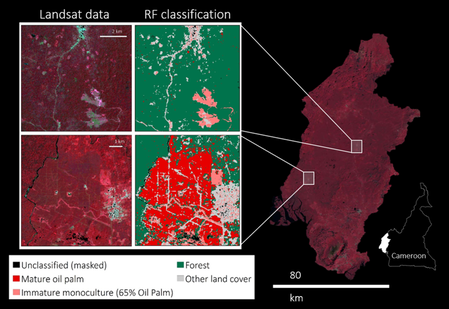
Random forest classification of Landsat data in SW Cameroon.
Expanding agriculture in the tropics is the single greatest driver of deforestation, causing ~80% of forest conversion globally. Understanding the causes and consequences of this expansion is critical for reducing deforestation in ecosystems that support over 60% of Earth’s biodiversity and provide critical services to the > 800 million people who live in them. In addition to mapping deforestation and identifying the drivers, we also work to understand the impacts of rapid, large-scale deforestation on ecosystem processes in the 12 million km2 of tropical forest that remain, drawing on Landsat, MODIS, and Sentinel data, farmer-surveys, and agricultural economics data.
Sustainable development in high forest cover countries
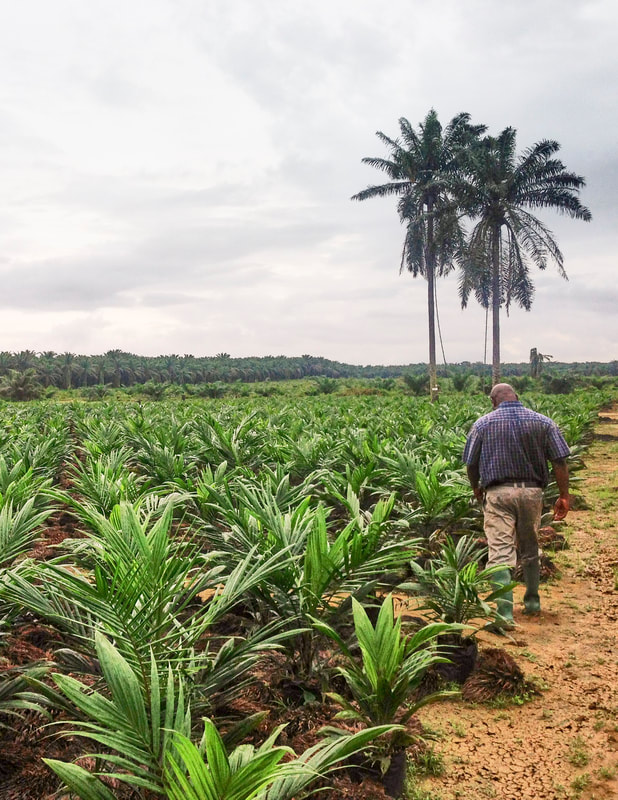
Oil palm nursery in Cameroon.
Identifying sustainable development solutions is an inherently interdisciplinary endeavor. Ecology and Social-Ecological Systems (SES) research have a powerful role to play in informing everything from sustainable practices in agriculture, agroforestry, logging, and land-use allocation, to effective strategies for biodiversity conservation, carbon conservation, and understanding disease transmission pathways. Employing an interdisciplinary SES and land system science approach, we work with the Center for International Forestry Research (CIFOR), the Central African Forest Satellite Observatory (OSFAC), a part of OFAC, the Congo Basin Institute, and local communities and government and academic institutions to explore sustainable development strategies in the Congo Basin and beyond.
Leveraging NEON for socio-environmental systems research
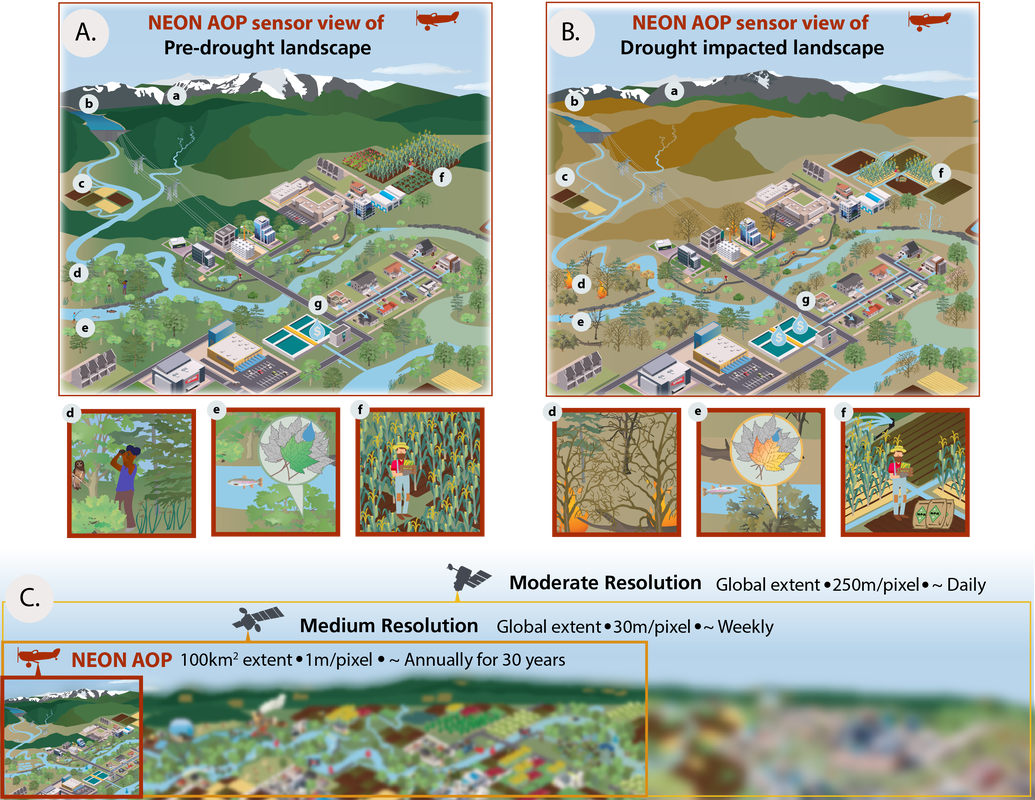
Human–environment interactions will increasingly expose both systems to risks, but also yield opportunities for improvement as we gain insight into these complex, coupled systems. These interactions operate over multiple spatial and temporal scales, requiring large data volumes of multi-resolution information for analysis. Climate change, land-use change, urbanization, and wildfires, for example, can affect regions differently depending on ecological and socioeconomic structures. We are a part of the Landscape Exchange Network for Socio-environmental systems (LENS), a NSF Research Coordination Network (RCN) seeking to build a community interested in understanding interactions between natural and human systems in landscapes surveyed by the NEON Airborne Observation Platform.

